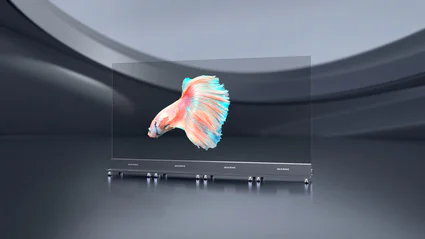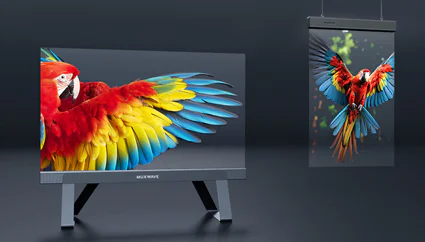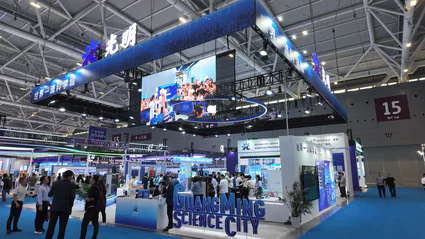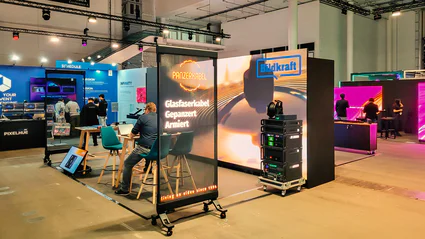Sur la base des écrans transparents à LED conventionnels, le panneau lumineux est évidé pour atteindre un certain niveau de transparence. C'est ce que l'on appelle un écran LED à grille. L'optimisation de la technologie de la grille à LED a conduit au développement de l'écran transparent à LED d'aujourd'hui.
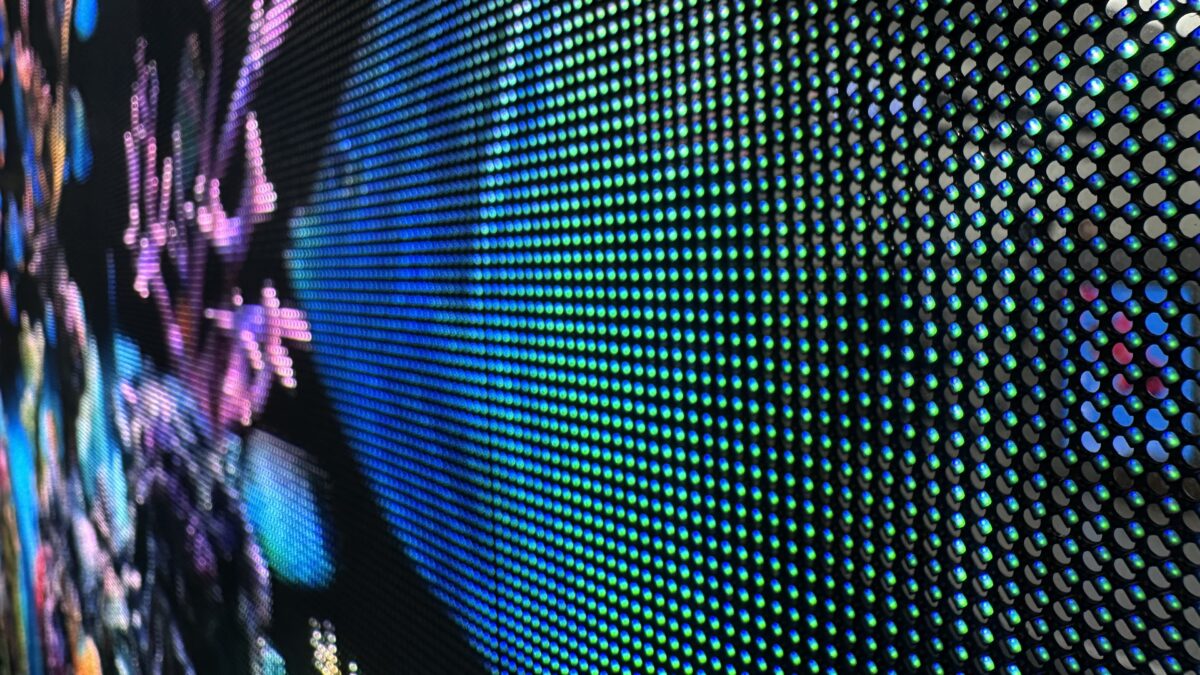
Pourquoi les écrans transparents à LED peuvent-ils être transparents ? Quel est le principe ?
Le panneau lumineux de l'écran transparent à LED est composé de bandes individuelles avec des zones creuses entre elles, ce qui réduit l'obstruction de la ligne de vue de l'observateur. Cette conception permet de voir clairement la scène qui se trouve derrière l'écran. De loin, la structure des bandes peut même devenir invisible, donnant l'impression que l'image est suspendue sur le verre.
Deux approches dans l'industrie des écrans transparents à LED :
1、Modification des écrans d'affichage LED traditionnels :
- Incorpore des motifs creux dans les modules des écrans d'affichage LED traditionnels.
- Présente de nouveaux circuits d'adaptation, de pilotage et de contrôle afin d'optimiser et d'innover dans le domaine des écrans transparents à LED.
- Les produits représentatifs comprennent les écrans transparents à LED et les écrans à film à LED.
- Principalement utilisé dans les zones de petite et moyenne taille avec des exigences élevées en matière de pixels.
- Applications courantes : murs-rideaux en verre, fenêtres commerciales, expositions, salons automobiles, etc.
2、Direct Assembly of Light Strips/Light Dots :
- Assemblage d'écrans transparents à LED directement par la jonction de barres lumineuses ou de points lumineux.
- Utilise des structures spéciales et des méthodes de traitement des signaux.
- Couramment utilisé dans les écrans à bandes LED et les écrans à grille LED sur le marché.
- Convient aux projets d'illumination à grande échelle avec un espacement de 20 mm ou plus.
- Convient à la visualisation lointaine et étendue en raison des exigences de résolution plus faibles.
- Applications courantes : spectacles de lumière dans les villes, affichages à grande échelle, etc.
2⃣️ Pourquoi les écrans transparents à LED peuvent-ils être transparents ? Principes de mise en œuvre
Sur la base des écrans transparents à LED conventionnels, le panneau lumineux est évidé pour atteindre un certain niveau de transparence. C'est ce que l'on appelle un écran LED à grille. L'optimisation de la technologie de la grille à LED a conduit au développement de l'écran transparent à LED d'aujourd'hui.
Pourquoi les écrans transparents à LED peuvent-ils être transparents ? Quel est le principe ? Le panneau lumineux de l'écran transparent à LED est composé de bandes individuelles avec des zones creuses entre elles, ce qui réduit l'obstruction de la ligne de vue de l'observateur. Cette conception permet de voir clairement la scène qui se trouve derrière l'écran. De loin, la structure des bandes peut même devenir invisible, donnant l'impression que l'image est suspendue sur le verre.
Deux approches dans l'industrie des écrans transparents à LED :
- Modification des écrans d'affichage LED traditionnels :
- Incorpore des motifs creux dans les modules des écrans d'affichage LED traditionnels.
- Présente de nouveaux circuits d'adaptation, de pilotage et de contrôle afin d'optimiser et d'innover dans le domaine des écrans transparents à LED.
- Les produits représentatifs comprennent les écrans transparents à LED et les écrans à film à LED.
- Principalement utilisé dans les zones de petite et moyenne taille avec des exigences élevées en matière de pixels.
- Applications courantes : murs-rideaux en verre, fenêtres commerciales, expositions, salons automobiles, etc.
- Assemblage direct de bandes lumineuses/points lumineux :
- Assemblage d'écrans transparents à LED directement par la jonction de barres lumineuses ou de points lumineux.
- Utilise des structures spéciales et des méthodes de traitement des signaux.
- Couramment utilisé dans les écrans à bandes LED et les écrans à grille LED sur le marché.
- Convient aux projets d'illumination à grande échelle avec un espacement de 20 mm ou plus.
- Convient à la visualisation lointaine et étendue en raison des exigences de résolution plus faibles.
- Applications courantes : spectacles de lumière dans les villes, affichages à grande échelle, etc.
Muxwave présente le premier écran LED transparent au monde avec un espacement minimum d'environ 2,5 mm, adoptant un aspect creux en treillis qui révolutionne la transparence par rapport aux écrans LED transparents traditionnels, augmentant considérablement la transparence.
